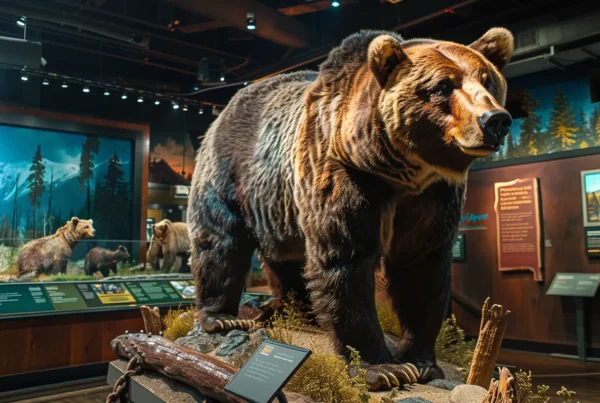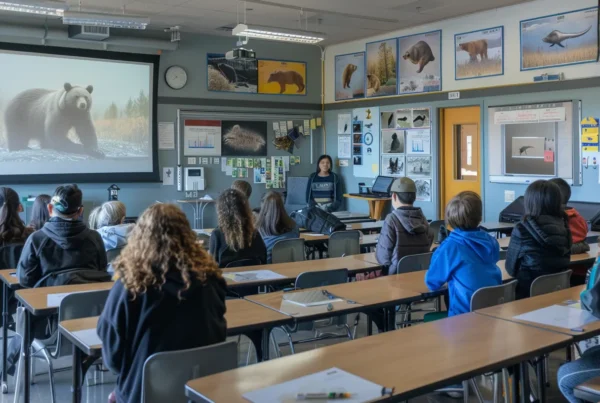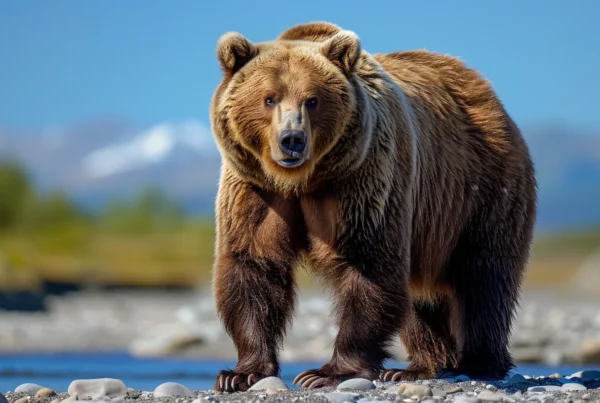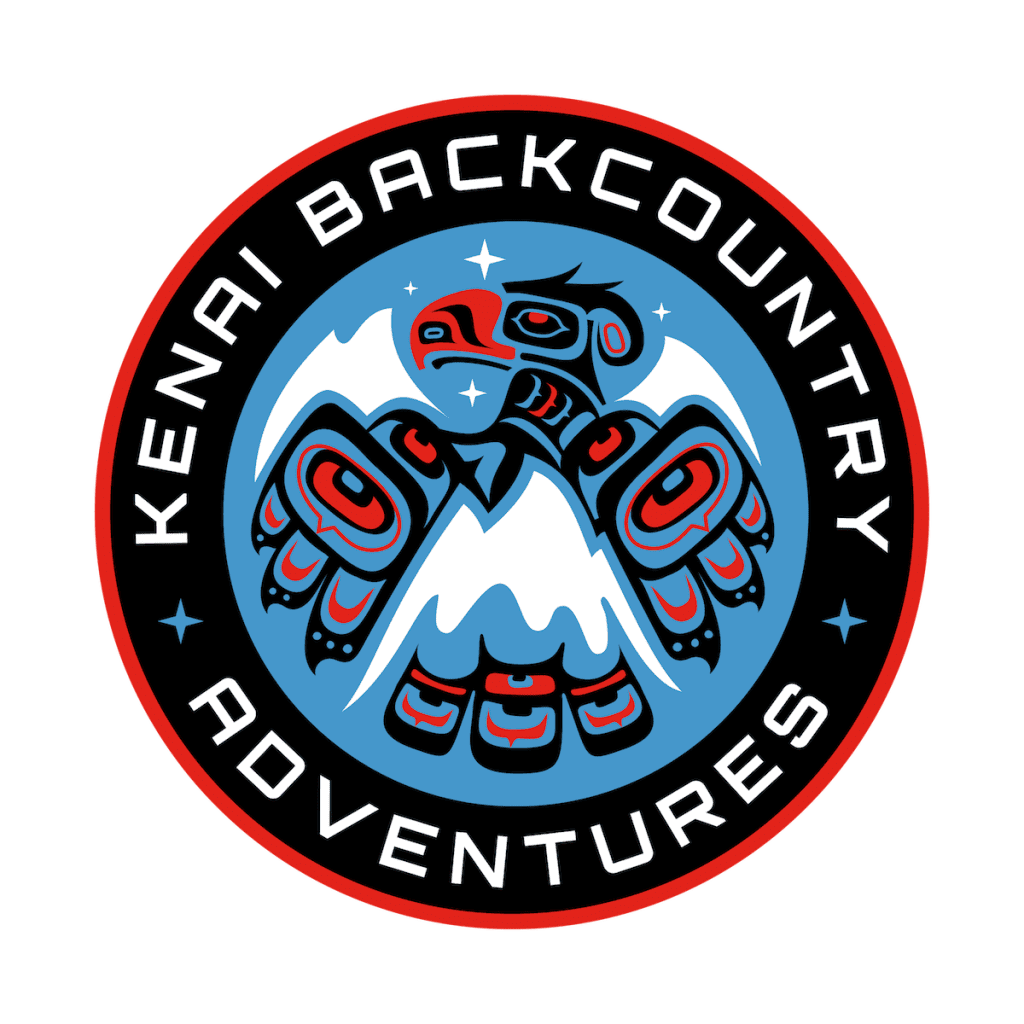Kenai Peninsula Wildlife HabitatsHabitat is home for wildlife. Habitat provides the food, water, shelter and space that animals need to live. Understanding a little about the varied habitats of the Kenai Peninsula makes it easier to find and watch animals, and to appreciate their lives. |
| SETTING
The Kenai Peninsula lies at the junction of two major ecosystems: temperate rainforest and boreal forest. On the rainy east and south coasts, the shorelines are lined with mossy rainforest and wetlands. On the drier north and west sides of the peninsula, shrub lands, wetlands, and boreal forest dominate. In between rise the rugged Kenai Mountains, with peaks that reach 5,000 and 6,000 feet—where higher elevations and huge snowfalls create glacial and cold tundra habitats. TEMPERATE RAINFOREST The fringe of dense, dripping evergreen forest along the eastern side of the Kenai Peninsula is the northernmost reach of the largest temperate rainforest on Earth, a band of habitat that stretches from South-central Alaska to Northern California. And it does rain! Whittier, in the heart of this wet zone, gets 200 inches of precipitation (rain and snow) each year. In the coastal rainforest, September and October are the wettest months, and April and May are the driest. That rainfall supports a forest of predominantly Sitka spruce trees with some western hemlock. A walk in the temperate rainforest on a summer day is a rich experience. The shady forest floor is dappled by patches of sunlight, or splashed by dripping rain, and it seems that every inch of ground, every stump and decaying, fallen tree is covered with moss and vegetation. Enormous leaves of skunk cabbage rise from damp areas. Platter-size devil’s club leaves, studded with splinter-like thorns, spread above blueberry and highbush cranberry bushes. Mosses and lichens hang from trees. |
Fire is rare in the rainforest, and wind storms take out far more trees than do wildland fires. Many trees in this region grow in thin, poorly drained soil and have shallow root systems. Winter storms can set up a chain reaction where falling trees topple their poorly anchored neighbors. This opens up the forest canopy and allows sunlight to pour in, accelerating the growth of adjacent trees and vegetation. The rainforest is home to a number of forest-loving bird species, such as Townsend’s warblers, chestnut- backed chickadees, flycatchers, and crossbills. Porcupines feed on bark, needles, and tender understory plants. In summer, bears bed down among the roots of streamside trees. Red squirrels are masters of this habitat, dashing and chattering among the branches overhead. The rainforest is home to a number of forest-loving bird species, such as Townsend’s warblers, chestnut- backed chickadees, flycatchers, and crossbills. Porcupines feed on bark, needles, and tender understory plants. In summer, bears bed down among the roots of streamside trees. Red squirrels are masters of this habitat, dashing and chattering among the branches overhead.
Here and there within the rainforest, you’ll come across openings that look like meadows dotted with tiny dark pools. The wet “soil” in these bogs is largely an accumulation of dead moss and other organic matter, which creates an acidic, low-nutrient environment that few forest plants can tolerate. Tannins leached from vegetation color the water brown. Tiny insect-eating sundew plants trap bugs with sticky hairs. Aromatic heath-family plants such as Labrador tea grow as low bushes, and hardy conifers known as shore pines (a variety of lodgepole pine) grow into fascinating bonsai-like stunted forms. Few animals rely completely on these bog habitats, but ground-nesting birds such as juncos often raise their broods in hollows in the moss, and bears and other animals make frequent visits. |
 BOREAL FOREST BOREAL FOREST
On the northwest side of the Kenai Peninsula, across the mountains from the rainforests that fringe Prince William Sound, the climate is colder and drier, producing a forest very different from the wet coastal one. This boreal forest (sometimes called “taiga”) is part of one of the world’s largest biomes, extending across North America from Alaska to Newfoundland and across Eurasia from Norway to Siberia. It consists of mixed evergreens and hardwoods, interspersed with wetlands and lakes. Climate, water, fire and insects shape the boreal forest. Trees are adapted to cold temperatures, low sun angles, low precipitation, wet soils, and short growing seasons. Periodic fires and large insect infestations kill most of the overstory spruce trees, allowing deciduous trees such as aspen and birch to remain a significant part of the forest. |
| Climate, water, fire and insects shape the boreal forest.
Trees are adapted to cold temperatures, low sun angles, low precipitation, wet soils, and short growing seasons.
|
In the Kenai Peninsula’s boreal forest lands, well-drained uplands are dominated by white spruce and birch stands. Dead snags—the results  of fire and insect damage—form gray pillars, mined by woodpeckers. Willow, cranberry, currant, rose, and bearberry shrubs grow in patches on the forest floor. As you walk, thick mosses and lichens crackle underfoot, and jays and red squirrels announce there passing.In wet areas such as valley bottoms and glacial plains, where soils are soggy, acidic and cold, the primary overstory trees tend to be Lutz and black spruce. These slender, scruffy-looking trees rarely exceed a foot in diameter. The Lutz spruce, a hybrid between white and Sitka spruce, occupies small hills left by glaciers and other relatively drier areas. Willows and alders form thickets, and many areas have lush grass understories. The landscape is sprinkled with bogs, ponds, and small lakes. of fire and insect damage—form gray pillars, mined by woodpeckers. Willow, cranberry, currant, rose, and bearberry shrubs grow in patches on the forest floor. As you walk, thick mosses and lichens crackle underfoot, and jays and red squirrels announce there passing.In wet areas such as valley bottoms and glacial plains, where soils are soggy, acidic and cold, the primary overstory trees tend to be Lutz and black spruce. These slender, scruffy-looking trees rarely exceed a foot in diameter. The Lutz spruce, a hybrid between white and Sitka spruce, occupies small hills left by glaciers and other relatively drier areas. Willows and alders form thickets, and many areas have lush grass understories. The landscape is sprinkled with bogs, ponds, and small lakes. |
 |
Mammals of the boreal forest include mice and voles, snowshoe hares, red squirrels, lynx, martens, and short-tailed weasels (ermine). Moose, and occasionally caribou, wander between forest and nearby wetlands to forage. Wolves, coyotes and wolverines follow prey into the trees. Gray jays, blackbilled magpies, spruce grouse, boreal chickadees, woodpeckers, and owls are among the birds that nest and forage in the boreal forest.The boreal forest is a land of dramatic seasons. In autumn, brilliant orange-and-gold deciduous trees burn like cool fires among the somber spruces. In winter, lakes and ponds are locked in ice, and the movements of lynx and hares, ermines and mice are revealed in tidy tracks across the snow. Spring brings a burst of bird songs and the smell of budding trees, and summer is a season of long daylight hours and intense growth. |
| LAKES AND FRESHWATER WETLANDS
Lakes and ponds—shallow or deep, large or small, cold, glacial and silty or black as strong tea—serve as important habitat for many of the Kenai Peninsula’s animals. Wetland birds such as grebes, loons, swans and ducks nest on lake fringes and rear their chicks on the lakes. Beavers and muskrats make their homes in and alongside lakes and wetlands. Moose forage heavily on aquatic plants in the summer months. Lakes and ponds are particularly abundant in the flat glacial plains of the western side of the peninsula, where thousands checkerboard the landscape. Most of these water bodies are dark with tannins and lignins leached from slowly-decomposing plant material in nearby forests and wetlands. Many are surrounded by thick mats of waterlogged moss that quake as you walk across them. Freshwater wetlands are among the most widespread of Kenai Peninsula habitats. They’re incredibly important ecosystems, buffering floodwaters, filtering runoff, and providing shelter for nesting birds and wetland mammals such as beavers, muskrat, mink, and voles. Moose forage in wetlands during both summer and winter. Juvenile salmon shelter and grow in wetland channels. Wetlands in the Kenai River area are important summer feeding and calving grounds for the Kenai Lowlands caribou herd. There are many different types of wetlands on the peninsula. Depending on water flow, a wetland may look like a lush meadow, a moss blanket, or a shrub thicket. Some wetlands are easy to traverse on foot, while others are downright treacherous. Some are tiny openings within thick forest, while others are enormous, tundra-like expanses. Characteristic plants vary with the site, but some common wetland plants on the peninsula are sphagnum mosses, grasses, sedges (including the puffball-topped “Alaska cotton”), horsetail, pond lily, dwarf birch, and sweetgale. |
 RIVERS RIVERS
The Kenai Peninsula has thousands of small rivers and streams that collectively produce millions of salmon. Some rivers are crystal clear; others are milky, tan or gray with glacial silt; and others are brown.Different types of rivers support different species of wildlife. Tumbling mountain streams are the homes of American dippers and harlequin ducks, while slow, placid oxbows shelter trumpeter swans and bank-nesting beavers. Bears patrol shallow streams where spawning salmon mill. The different species of salmon rely on different types of rivers for spawning and rearing. Chinook lay eggs in the gravels of fast-moving, large rivers. Pink and chum salmon spawn in small coastal streams. Sockeye rely on rivers that flow from lake systems. Coho use a wide variety of river types, from tiny side channels to beaver ponds Rivers also shape terrestrial habitats. Glacial rivers carry large amounts of sediment, which is deposited as the water slows, forming shifting patterns of braided channels and islands where cottonwood, willow, and alder dominate. Migratory and resident birds are drawn to these riparian forests and thickets to nest and forage, and bears sleep off big meals of salmon in the shelter of the leaves. In winter, moose clip riparian willow thickets into stunted hedges. |
|
|
ESTURARIES Where rivers and streams join the sea, estuaries are created. Flooded by the twice-daily high tides, estuaries are mixing areas where fresh and salt water meet.
Life is abundant in estuaries. Marine worms, small crabs, insects, small clams and shrimp-like crustaceans thrive in the mud and silt, and are eaten by birds, fish and other wildlife. Kelp, green algae, eelgrass and other aquatic vegetation feed waterfowl and serve as rearing areas for young salmon. The meadow-like areas above all except the highest tides are characterized by salt-tolerant plants such as sedges, beach rye and goose-tongue. Sloughs meander through these wetland meadows, filling and draining as the tides change. Sculpin and flounder share these sloughs with salmon fry and threespine sticklebacks, small fish tolerant of fresh and salt water. Estuaries are important feeding areas for migrating waterfowl and shorebirds, and are year-round home to a variety of birds and animals. Estuaries are so fertile and productive that they export nutrients to the surrounding areas, enriching the ocean.
 THE WORLD BETWEEN THE TIDES THE WORLD BETWEEN THE TIDES
On the shores of the Kenai Peninsula, there’s wildlife viewing at your feet! The region’s dramatic tides and nutrient-rich waters create productive, beautiful, and fascinating intertidal zones—the regions between the low and high tide lines. As you explore the shore, you’ll discover hermit crabs with chili pepper-red claws, graceful anemones, weird armored worms, and much more.Intertidal animals are adapted to a world that changes twice every 24 hours, as a saltwater blanket of tide moves back and forth across their home. When the tide is in, animals are bathed in a nutritious soup. When it’s out, they’re exposed to air. Those that are most capable of withstanding exposure live highest on the beach, and those that can stand only a short period of exposure live lower down. This often produces a series of distinct intertidal zones that, from a distance, appear as bands of color and texture on the shore. The upper level of the intertidal zone is home to the hardier creatures—barnacles, snails and limpets—which can withstand the longer twice-daily exposure to air. Limpets are mollusks with a single, coneshaped shell they pull tight against the rock when the tide is out. The familiar crusty white shell of the barnacle protects a tiny crustacean that filter-feeds when the tide is up, combing the water with a feathery appendage. The mid-level abounds with mussels—filter feeders that siphon the water when the tide is in and close up tight when the tide is out. Chitons (small, flat mollusks with shells of eight overlapping plates) slowly creep through the zone rasping algae off the rocks. Sea slugs and anemones find shelter in cracks and puddles. The lower intertidal level supports the greatest variety of life. This is where brightly colored sea stars prowl. These “starfish” prey on mussels, snails and slow-moving intertidal creatures. Sea urchins, polycheates (segmented marine worms), snails, clams and mussels, and a myriad of more mobile creatures such as fish, shrimp, crabs and octopus thrive here. Kelp and other seaweeds flourish at this level as well. |
| The most important and abundant life forms in the sea are plankton, tiny, free- floating plants and animals that form the basis of the food web for virtually all life in the ocean. | UNDERSEA REALM
The glacial fjords of the Kenai Peninsula are deep watery valleys inhabited by a vast array of marine life. Sharks, whales, |
 Plankton feed copepods, tiny, incredibly abundant crustaceans, which in turn feed euphausiids— shrimplike crustaceans often called krill. They also feed small fish such as herring, smelt, sticklebacks and sand lance. Juvenile salmon, cod, hake, and pollock feed on the herring and krill, and giant humpback whales filter krill—and any fish that happen to be nearby—from the water by the ton.Much of the life in the sea makes daily (and seasonal) migrations up and down through the water column. Zooplankton tend to be deeper by day than at night. Some animals, like sleeper sharks, hunt and swim in an oscillating pattern, ranging between the sea floor and the surface. Plankton feed copepods, tiny, incredibly abundant crustaceans, which in turn feed euphausiids— shrimplike crustaceans often called krill. They also feed small fish such as herring, smelt, sticklebacks and sand lance. Juvenile salmon, cod, hake, and pollock feed on the herring and krill, and giant humpback whales filter krill—and any fish that happen to be nearby—from the water by the ton.Much of the life in the sea makes daily (and seasonal) migrations up and down through the water column. Zooplankton tend to be deeper by day than at night. Some animals, like sleeper sharks, hunt and swim in an oscillating pattern, ranging between the sea floor and the surface.
The sea floor can be rocky, sandy or muddy. Corals, sponges, shellfish, sea pens and other life grow on the bottom. Many sea floor dwellers feed on the rain of detritus (sinking plankton, dead animals and waste) that falls from above. Different conditions affect the fertility of the ocean waters: the salinity, depth and temperature of the water, the season of the year, silt content and the proximity to the open ocean, rivers, glaciers and wetlands. Currents and upwelling mix water and create places, such as Kachemak Bay, that are especially productive. These can be hot spots for fishing and wildlife watching. |
|
Invasive plants can alter habitat and displace the native plants that wildlife depend upon for survival. More than 20 species of invasive plants have been found on the Kenai Peninsula. The most invasive of these are Canada thistle, bird vetch, brittlestem hempnettle, spotted knapweed, oxeye daisy, white sweetclover, yellow sweetclover, purple loosestrife, narrow-leaf hawkweed, common tansy, Western salsify, butter and eggs, orange hawkweed, and reed canary grass. Many of these plants have showy flowers and invite picking. This can lead to the spreading of seeds into areas previously unaffected by invasive species. Please do not contribute the spread of invasive plants to the Kenai Peninsula. Leave all plants where you find them. Clean your shoes and clothes of seeds before leaving an area where you’ve hiked, and avoid walking through flowering invasives. For more information visitwww.fs.fed.us/r10/spf/fhp/weed_book or stop at a Forest Service office for a free guide to invasive species. |
If you’re visiting the Kenai Peninsula in summer, you may encounter a hatch of biting insects. Although the Kenai isn’t notoriously buggy, a swarm of bloodthirsty mosquitoes, no-see-ums or blackflies can make misery out of any pause and get in the way of enjoying scenery and wildlife. Carry repellent or, better yet, bug-deterrent clothing. This can simply be loose fitting tight woven long-sleeve pants and shirts or include head nets and bug jackets. These materials will help you stop to view wildlife, eat lunch, or take a breather in peace. |
MOUNTAIN HABITATS
The temperate rainforests and boreal forests of the Kenai Peninsula climb from sea level to an elevation of about 2,500 feet, although the treeline varies depending on the aspect or direction of slope. At about 1,500 feet, subalpine trees such as mountain hemlock begin to appear in the forest. At about 2,500 feet, trees thin out and become scraggly, and the forest gives way to sub-alpine meadows, and then open alpine tundra.Just above the treeline, patches of ferns and stands of scrubby mountain hemlock and spruce are interspersed with lush meadows. Bear, ptarmigan and others visit this sub-alpine habitat, feeding on the abundant and nutritious herbs, flowers and forbs. Crystal-clear streams course through the meadows, and lakes and shallow ponds are nestled into pockets.
Above the sub-alpine zone, a rocky, green-gray landscape stretches across the upper slopes and runs along the ridges. This is referred to as alpine, or alpine tundra. In winter, the alpine is a cold, windy and inhospitable place, but in summer it is visited by a number of birds and mammals. Alpine tundra features a ground cover of hardy, low-lying plants such as heather, moss campion and crowberry. Lichens cling to the rocks.

Golden eagles, which favor open environments, are sometimes seen in the alpine zone. Ravens and bald eagles ride thermal air currents three and four thousand feet upslope and circle and soar along the ridges. Wolves, bears, and wolverines visit this high country and cross over passes or follow ridges as they move to different areas.
A few animals make their homes on these open ridges and slopes. Flocks of ptarmigan—hardy, chicken-like birds—are fairly common in this high country and nest on the ground in early summer. Marmots dig their dens in talus slopes and under rock outcrops, fattening on the summer vegetation and hibernating during the winter. Mountain goats and Dall sheep are the masters of this realm, and their white coats may be spotted against the green slopes or dark cliffs. Winter storms may force them down to the shelter of the upper treeline (and occasionally even farther downslope), but otherwise they generally prefer the exposed, open, high country, where their agility helps them outmaneuver predators.
 AVALANCHE SLOPES AVALANCHE SLOPES
As you explore the Kenai Peninsula, you may notice open slopes on the mountainsides extending downhill from the alpine. Brushy deciduous vegetation such as alder and berry bushes, and clumps of fern cover these bright green slopes, but there are no large spruce and hemlock trees. These are avalanche slopes, swaths of the mountainsides that are bulldozed in late winter and early spring by tons of moving snow.The mountains of this region are buried in dozens of feet of snow each winter. Some areas with just the right slope are especially conducive to avalanches. The likelihood of an avalanche any given year varies. The condition of the snow when it falls and weather between snowfalls are as important as the quantity.
|
|
GLACIERS AND ICE FIELDS
Glaciers have worked like carving tools on the landscape of the Kenai Peninsula, profoundly shaping the area. They are the scenic jewels of the region, and hundreds of glaciers can be counted in the mountains and valleys. Many of these glaciers spill from the Harding Icefield. This vast plain of ice and its tendrils of glacier cover 1,100 square miles of the ice-chiseled Kenai Mountains.
The higher reaches of this region accumulate snow each year. Successive layers of snow weigh down on lower layers, and the compressed snow gradually forms glacial ice, which oozes down valleys. The Harding Ice- field, which is thousands of feet thick in places, feeds more than 35 glaciers, including the tidewater glaciers of Kenai Fjords National Park and the enormous Tustumena Glacier at the head of Tustumena Lake. Most of the Kenai Peninsula’s glaciers are receding— melting back faster than they flow forward. As they recede, glaciers leave behind scoured, rocky landscapes, scraped bare by ice and rocks imbedded in the bottom of the glacier. Patches of rubble, sand and silt offer a foothold to wind-borne seeds and spores. Moss and lichens are the first plants to grow on the landscape, and produce acids that help to break down the rocks. Over the course of a few years, other plants begin to sprout. Plants such as lupine and alder help “fix” atmospheric nitrogen to the mineral soil, making it more fertile. Decomposing leaves contribute to the developing soil, and shrubs or trees become established. Over time, this succession of colonizing plants transforms the landscape. Depending on the location, the area may develop into a temperate rainforest, boreal forest, tundra, or bog. |
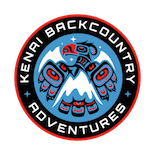

 to lakes.
to lakes.




